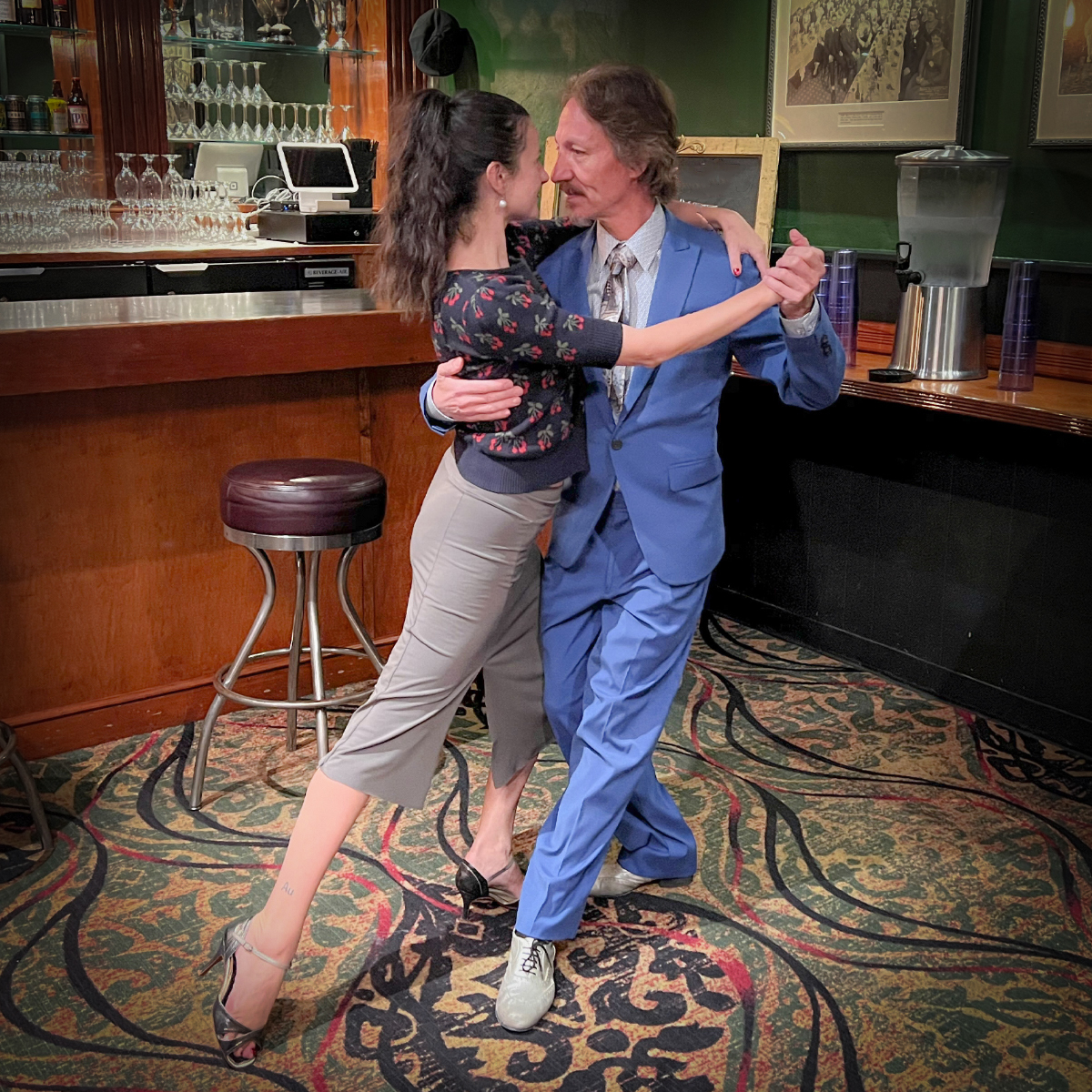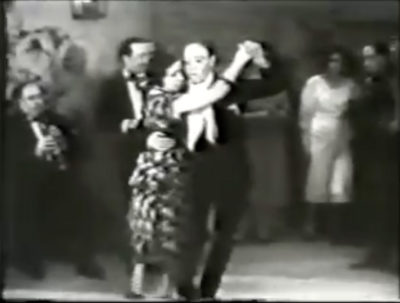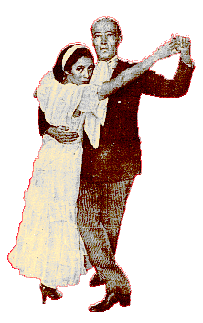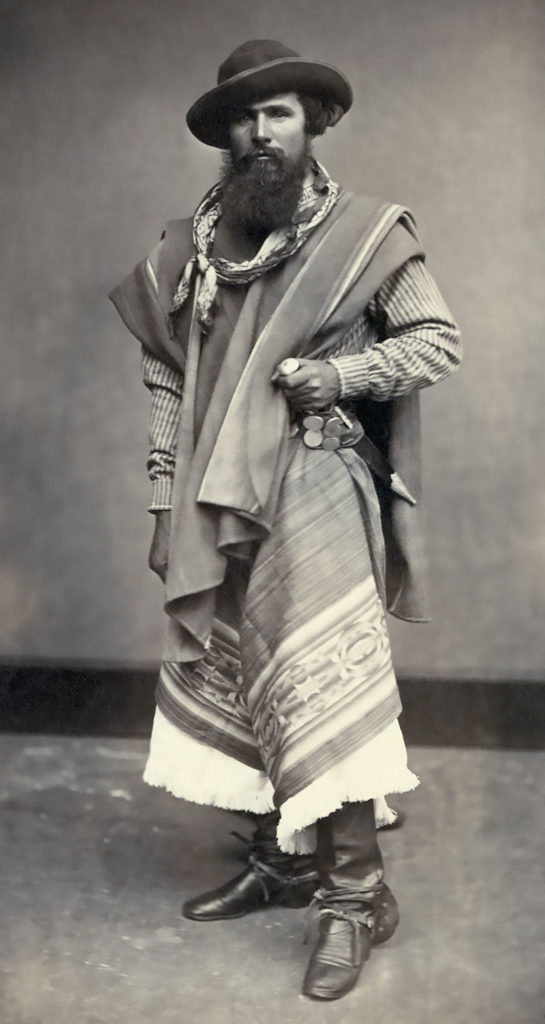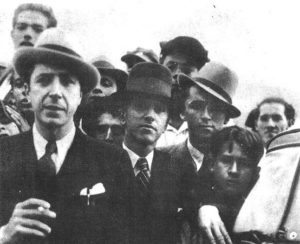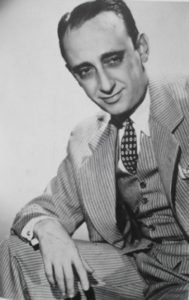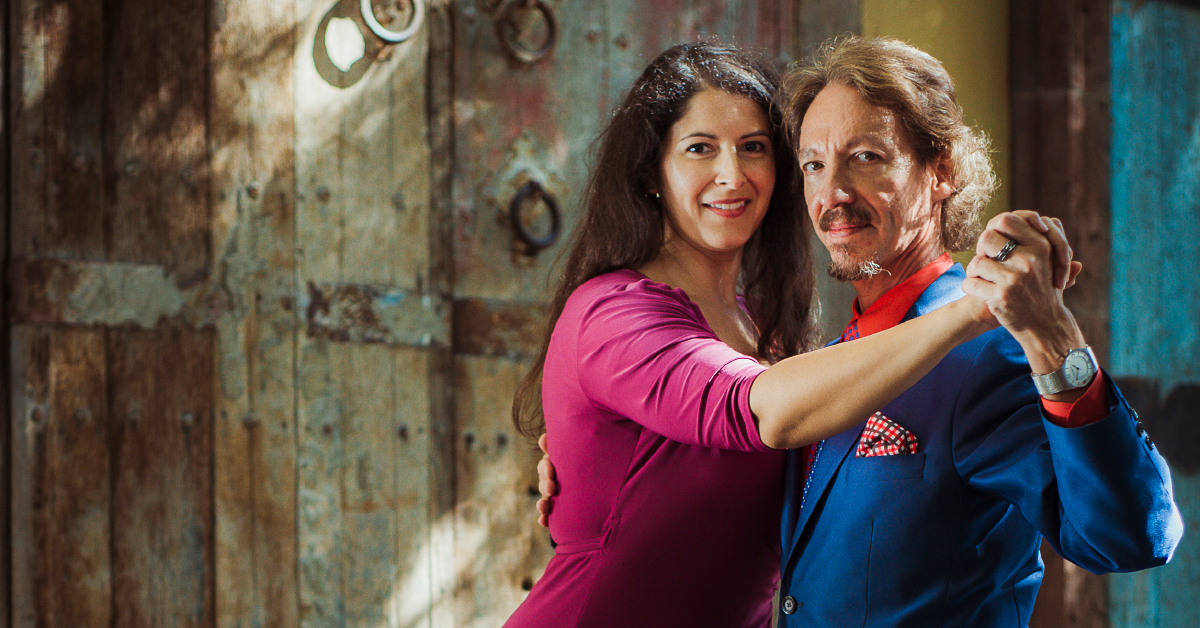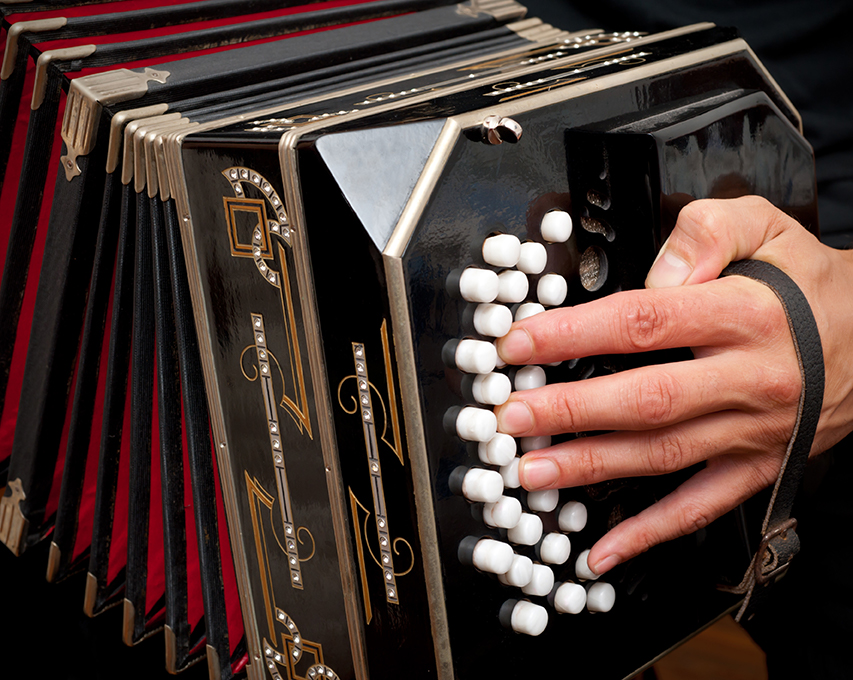
Argentine Tango and the bandoneon

How did the bandoneon become the instrument of Tango?
Invented in Germany, the bandoneon is an instrument from the concertina family.
History:
Concertinas were conceived as an improvement of the accordion: the first concertinas were independently invented in 1829 in England by Sir Charles Wheatstone and in 1834 in Germany by Carl Friedrich Uhlig, they had five buttons on each side of the box, where each button could play two different notes when opening or closing the bellows.

The concertina's sound was conceived to blend in with violins, to encourage its use in chamber orchestras.
The bandoneon is a musical instrument that resulted from the evolution of the concertina, invented by Carl Friedrich Uhlig (1789-1874) in 1839, inspired by the accordion, and conceived as a portable version of the harmonium (a type of pump organ).

The bandoneon is part of the hand-held bellows-driven free-reed category, sometimes called squeezeboxes.
The sound is produced as air flows past the vibrating reeds mounted in a frame.
The name comes from Heinrich Band, a musician who, in 1846, started selling an improved version of the concertina that he designed, with 28 buttons (producing 56 tones). He later added more buttons, reaching a total of 65.
It is worthy of note that Heinrich Band never patented the bandoneon, since he saw his instrument as an improvement of the concertina.
It got its name from Band's customers, calling it 'Band-o-nion.'
Heinrich Band died at 39 in 1860, and his wife continued the production of bandoneons.

Carl Zimmerman owned the factory where the bandoneons were produced.
He emigrated to the US and kept producing his instrument, which became popular among Irish immigrants and also invented another stringed instrument known as the autoharp and sold his factory in Germany to Louis Arnold.
The son of Louis Arnold, Alfred Arnold, who worked in the factory since childhood, eventually developed a bandoneon with 71 buttons and two notes each (producing 142 tones).
His version, called “AA”, became the preferred bandoneon of Argentine Tango musicians.

After the Second World War, Alfred Arnold’s factory, which was located in what became Eastern Germany, was confiscated and ended the production of bandoneons to become a diesel engine parts factory.
Arno Arnold, Alfred’s nephew, escaped from Eastern Germany and opened a bandoneon production factory in Western Germany in 1950.
This factory closed after Arno’s death, in 1971.

Because the bandoneon was not patented, there was never any information recorded about the materials used to construct one, like the precise alloys of the metallic vibrating reeds that are different for every note.
Today, several individuals and companies in Germany have partnered with the latest technology to study the historical AA bandoneons and produce them again.
The Bandoneon arrives in Buenos Aires

The first bandoneon player ever mentioned in Buenos Aires was Tomas Moore, “el inglés” (the Englishman), who brought this instrument to Argentina in 1870.
Domingo Santa Cruz (author of the famous tango “Unión Cívica”) played the concertina until Tomas Moore presented his bandoneon.
These bandoneons were a primitive version of the 32 toned instruments.
After 1880, when Tango began to develop its definitive form, the most recognized bandoneon players were:
Antonio Francisco Chiappe and “El Pardo” Sebastián Ramos Mejía.
From these bandoneonists, there is a primitive tango, or “proto-tango”, “El Queco”, very popular at the time.
"Unión Cívica" of Domingo Santa Cruz, by Juan D'Arienzo y su Orquesta Típica, recorded in 1938.

The bandoneon was not immediately accepted by Argentine Tango musicians and dancers.
The original music band formations of flute, violin, and guitar played a staccato, bright and fast rhythm.
The bandoneon, with its “legato,” with its low key notes, favored by its players, who would constantly insist to its German producers to add more low key notes, seemed to not belong to Tango.
But in fact, it gave Tango what Tango was missing until the integration of the bandoneon, and the bandoneon found the music it seemed to be created for.

The bandoneon, contrary to other instruments of Tango, like the violin, the flute, the guitar, the harp, and later, the piano, had no traditions to refer to.
It was a blank piece of paper on which anything could still be written.
There were neither maestros nor methods for it.
Everything had to be created from scratch.
The culture of gauchos and compadritos, self-reliance and readiness for adventures, was apt to receive an instrument that nobody could tell you what to do with and in which you could become a total creator.

Perhaps the similarities between its sound and the sound of the organitos that disseminated Tango everywhere helped its acceptance.
In the earlier years of Tango music, the “organito” (barrel organ) had a significant role in the initial spread of tango music throughout the city of Buenos Aires.
It was made of tubes or flutes and a keyboard operated by the cylinder, enabling the passage of air to produce different notes.
Bellows generate air activated simultaneously with the cylinder by rotating a handle.
The “organito,” like the organ and the bandoneón, is a wind instrument.
The sound of the “organito” prepared the ears of the Porteños for a natural transition to the bandoneon in Tango, when it finally arrived in 1880.
It is around these “organitos,” where men were seen dancing tangos in the street, practicing “cortes y quebradas.”

Juan Maglio “Pacho”
(1881 - 1934) was essential to the acceptance of bandoneon as a musical instrument of Tango.
He started playing as a professional at the beginning of the 1900s, first in brothels and then in cafés, until, due to his rising prestige, he was convinced to play at the very famous Café La Paloma, in Palermo, in 1910.
In 1912 he started to record for Columbia Records.
His success was so great that the word “Pacho” became synonymous with “recordings”.
"Armenonville", recorded by Juan Maglio "Pacho" in 1912.
In 1910, Casa Tagini, manager of the branch of Columbia Records in Argentina, produced the first recordings of a musical formation dedicated exclusively to playing tangos and including the bandoneon.
In need of an appropriated label for this musical formation, the term “Orquesta Típica Criolla” was born.

Vicente Greco
(1888-1924), was the conductor and bandoneon player in this musical formation.
"Rosendo", recorded by Vicente Greco y su Orquesta Típica Criolla in 1911.
Another advantage of the bandoneon was its portability.
Many of the first bandoneon players were guitar players:
Vicente Greco,
Ricardo Gonzalez “Muchila,” who introduced the bandoneon to
Eduardo Arolas, who also played guitar before;
Graciano De Leone, who played guitar and was submitted to the bandoneon by
Arolas.

Eduardo Arolas
(1892 - 1924) is the greatest bandoneon player in the history of this instrument in Tango music:
He created the octave phrasing, the passages harmonized in thirds played with both hands, the “rezongos” played with the bass notes (a particular effect that makes the bandoneon sound like grumbling), and with Juan Maglio Pacho, perfected the bandoneon legato technique, all elements which became essential to Tango.
"Rey de los bordoneos", recorded by Eduardo Arolas y su Orquesta Típica in 1912.

Pedro Maffia
(28 August 1899 - 16 October 1967)
He found in the bandoneon those dark sounds which separated the bandoneon from the flute forever, which in the beginning the bandoneon replaced and tried to imitate.
It is not known what secret gift made him find in the core of the bandoneon sounds that nobody had discovered before.
"Un capricho", recorded by Pedro Maffia y su Orquesta Típica in 1929.

Osvaldo Fresedo
(5 May 1897 - 18 November 1984)
Born in Buenos Aires to a wealthy family seems to have influenced his art: his refined and aristocratic orchestra was the favorite of upper circles.
However, even though Osvaldo's father was a wealthy businessman, at the age of ten, his family moved to La Paternal, a neighborhood somewhat away and humble, with flat houses in popular surroundings, which affected his destiny.
It was there where he started playing the bandoneon.
"Arrabalero" Osvaldo Fresedo y su Sexteto Típico, 1927.

Carlos Marcucci
(30 October 1903 - 31 May 1957)
A bandoneon virtuoso, wrote a method to learn to play the instrument that is still in use.
He was one the precursors of the virtuoso stream in bandoneon playing.
He was a great technician but also with great gifts for interpretation. His arrangements were complex.
He wrote an outstanding variation for his tango, “Mi dolor.”
He possessed a high technical command, fabulous fingering, and an overwhelming speed in his running variations performed with mathematical precision.
It was his initiative to systematize the solos played with both hands.
"Mi dolor" by Carlos Marcucci y su Orquesta Típica, 1930.

Pedro Laurenz
(10 October 1902 - 7 July 1972)
He continued the way Arolas played by incorporating the "compadreadas" that he liked much.
He was a bandoneon player of great techniques, skillful with both hands (high and low pitches), superb in sound, energetic in performances, and earnest in phrases.
He founded a performance school, composed outstanding tangos, and wrote exquisite variations.
"Arrabal", recorded by Pedro Laurenz y su Orquesta Típica in 1937.

Ciriaco Ortiz
(5 August 1905 - 9 July 1970)
He was a bandoneon player noted for his phrasing and ability to make the bandoneon sing.
It would be impossible to transcribe what he plays on his instrument on a music sheet.
What he contributes is the way of phrasing, dividing the melody, finding nuances, of harmonizing.
"Alma de bohemio" by Ciriaco Ortiz trio with guitars, recorded in 1935.
It is a style with reminiscences of the guitar plucking of the milonguero criollo, which, even though it has had no followers, may have much influenced Aníbal Troilo.

Anibal Troilo
(11 July 1914 - 19 May 1975)
He was one of those few artists who made us wonder what mystery, what magic produced such a rapport with people.
He integrated all of these approaches into his way of playing the bandoneon, taking something from each of them while being a master of personality and feeling in his expression.
In Anibal Troilo’s orchestra, his bandoneon is the instrument at the center of the musical arrangements.

"Quejas de bandoneón" by Anibal Troilo y su Orquesta Típica, 1944.
Bandoneons make the flesh of the songs in Juan D’Arienzo and Osvaldo Pugliese’s orchestras.

"El marne" by Juan D'Arienzo y su Orquesta Típica. 1938.

"La Yumba" by Osvaldo Pugliese y su Orquesta Típica, 1946.
In Carlos Di Sarli’s orchestra it blends a shade of color, perhaps realizing the intention of Ulich (the inventor of the concertina) of giving a particular nuance to a chamber orchestra.

"Y hasta el cardo tiene flor" by Carlos Di Sarli y su Orquesta Típica, 1941.
The bandoneon is an instrument of exceptional expressivity, which made it perfect for a musical genre that intends to communicate all the rainbow of possible emotions.
In addition to its excellent sound range -at least 142 notes (compare it with a piano which has 88), the character of its sound changes depending on the actions of opening (smooth, airy, and sweet) and closing (ruff, strong and throaty).
-
Leer este artículo en castellano -
More about the bandoneon and its historyMore about Argentine Tango:
More articles about Argentine Tango

How to dance Argentine Tango
An introduction to the most important details
Find the answer
https://escuelatangoba.com/marcelosolis/argentine-tango-and-the-bandoneon/
